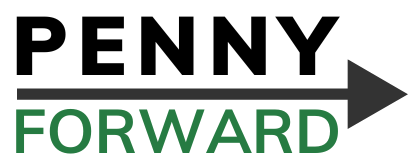A Message From Penny Forward Founder and CEO Chris Peterson
As we continue our journey to empower blind individuals in their personal, professional, and financial lives, I want to take a moment to reflect on the potential of generative AI and its incredible impact. I’m thrilled to share my thoughts on how this technology could be a gamechanger, opening up new doors for the blind community and helping us bridge the gap between our world and the sighted one.
Assistive technology has been a beacon of hope for the blind community for decades. From the advent of command line screen readers in the 1980s to today’s advanced solutions, we’ve seen remarkable progress. These technologies have allowed us to access information and interact with computers in ways that were once unimaginable, putting us on a relatively equal playing field with our sighted peers. But as technology evolved, we faced the challenge of graphical user interfaces and the fear of being left behind again.
Fortunately, screen readers for Windows, Macintosh, and eventually Linux/Unix graphical user interfaces emerged to keep us connected to the digital world. We formed our virtual communities, recognizing each other from e-mail lists and social media groups, turning the vast internet into a small town for the blind community.
Yet, despite these advancements, we’ve always felt like we don’t quite belong. Social networks are filled with images and videos that remain inaccessible to us, and while alt text and audio descriptions help, they often fall short of providing a complete understanding of visual content. In our financial lives, the problem becomes even more acute, as financial products are often explained through illustrations that can be challenging to interpret for those who can’t see them.
It’s like we’re speaking a different language from our sighted counterparts, and the message isn’t getting across. This challenge reminds me of the Star Trek: The Next Generation episode, “Darmok”, where the aliens spoke in metaphors, leaving both sides frustrated and partially in the dark.
Now, the advent of generative AI brings newfound hope. Microsoft’s rumored integration of generative AI into Windows 12 hints at a transformation in the way we interact with technology. Instead of issuing direct commands, we’ll describe our intentions, and the computer will figure out how to execute them. This is also reminiscent of the Star Trek universe, where crew members describe their intent to the computer and it comes up with the answer, seemingly like magic.
The possibilities are boundless. With generative AI, we can already receive detailed descriptions and interpretations of financial charts, allowing us to grasp complex data. If we don’t immediately find what we need, we can ask questions, and the AI provides answers. Imagine this being built directly into operating systems, enabling us to interact with images by simply asking questions, eliminating the need for alt text.
“Inaccessible software” may soon become a thing of the past. AI’s ability to interpret unlabeled icons on a hotel thermostat suggests that handling unlabeled buttons in software is well within reach. For those rare cases where the entire interface is an undescribed picture, AI-enabled screen readers could identify controls and understand how to interact with them, making software truly accessible.
The blind community is already embracing this technology. From creating artwork using generative AI to experiencing the joy of image descriptions through Be My AI, we are witnessing a shift in the way we perceive the world.
Generative AI also brings new career opportunities. AI prompt engineers are in high demand and making a significant impact in various industries. Our community’s creativity is boundless, and I hope to see blind prompt engineers working for major corporations and even venturing into self-employment.
While technology has often promised more than it could deliver, I can’t help but be excited about the possibilities of generative AI. This technology could be the catalyst we need to bridge the gap between the blind and sighted worlds, just as the shift in thinking allowed the Enterprise crew to understand metaphors. It’s time for us to shift our thinking and embrace AI as the potential bridge that brings us closer to a more inclusive and accessible future.
Let’s continue this journey together, embracing the power of technology to empower the blind community in all aspects of our lives.

Leave a Reply